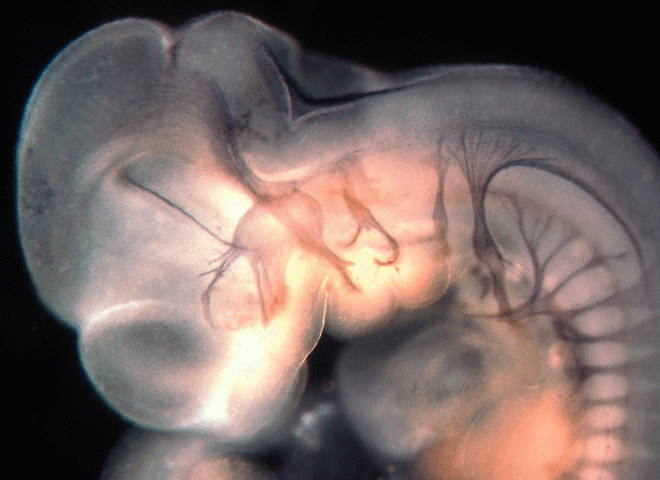Morphogenetic Signaling Network in Development and Disease
We are interested in the mechanisms that support embryonic morphogenesis, tissue homeostasis, disease pathogenesis, and organ repair and regeneration. Focusing initially on Wnt as one of the most prevalent signaling pathways in developmental biology, we are establishing how Wnt signaling and its crosstalk with other pathways control pluripotency and differentiation in stem cells and homeostasis in mature cells. More recently, we have also focused on epigenetic, post-translational, ciliogenesis, mitochondrial regulation, and nuclear lamina causally linked to human diseases. Our goal is to use this basic knowledge to develop innovative strategies for disease prevention and therapy.

Recruiting
The Hsu lab is recruiting Postdoctoral Research Fellows – Center for Craniofacial and Skeletal Biology.
Current projects
1. Skeletogenic Signaling Pathways in Development and Deformity
The primary objective is to investigate the fundamental mechanisms underlying skeletogenesis, including the development of skeletogenic mesenchyme, stem cell fate determination and differentiation, cell adhesion, intramembranous and endochondral ossifications, chondrogenesis, mandibular morphogenesis and TMD, and tooth morphogenesis. We currently focus on the interplay of Wnt, FGF, and BMP pathways, comparative genomics and proteomics studies, single-cell RNA-Seq, ATAC-Seq, and RNA-Seq, and imaging analyses. By elucidating the mechanism underlying skeletal and craniofacial development mediated by these regulatory networks, we hope to advance the knowledge base of human diseases.
2. Stem Cell Biology
This is an integral part of our projects studying the genetic control of cellular signals and the signal transduction mechanisms underlying the development of lineage-specific stem cells and niches in development and disease. We focus on the characterization of a newly identified and isolated population of skeletal stem cells with long-term self-renewal and differentiating and regenerative abilities, contributing directly to tissue repair by replacing the damaged skeleton. In collaboration with plastic and reconstructive surgeons, we have identified a similar human stem cell population and characterized their reparative and regenerative potential. Furthermore, we investigate the regulation of stem cells by the SUMO pathway and ciliogenesis. We are also interested in the bioengineering approach to address the different aspects of tissue repair and regeneration, e.g. 3D organoid culture, biomaterials in gene delivery and cell-based regeneration, bioinformatics, and system modeling for data and image analyses. By enhancing our understanding of various aspects of stem cells, we are closer to translating our findings for clinical use, improving reconstructive surgical repair, and maximizing the benefits of regenerative medicine.
3. Ubiquitin-like Modifiers
A multi-disciplinary approach is used to study the SUMO (small ubiquitin-related modifier) pathway in development and disease. We have demonstrated the requirement of SUMO-specific protease 2 (SENP2) in the survival and development of tissue-specific stem cells and niches. Current efforts focus on identifying SENP2 targets and downstream effects as well as the SUMO peptides and SUMO ligases in craniofacial and skeletal development and maintenance. The long-term goal is to gain important insight into the SUMO regulatory pathway and to explore preventive and therapeutic applications.
4. Wnt Signal Production and Transduction
This project deciphers regulatory mechanisms underlying the making of Wnt and its cellular signaling in signal-producing and signal-receiving cells, respectively. The main focus is to investigate our discovery of Gpr177/ Wntless as a master regulator of Wnt trafficking in the secretory and retrograde pathways. We study the Gpr177-mediated regulation of Wnt in the development of various organs, birth defects, and cancers.
5. Ciliogenesis and Ciliopathies
Human genetic analyses have recently linked mutations in ciliary components to skeletal deformities. We are particularly interested in BBSome (Bardet-Biedl syndrome proteins), an octamer complex, and a component of the basal body that regulates ciliary protein trafficking. New mouse models with disruption of BBS genes have been created to elucidate the etiologic mechanism of skeletal dysplasias.
6. Lamins in Progeria
This new collaboration with Dr. Howard Worman at Columbia University and Dr. Susan Michaelis at Johns Hopkins investigates skeletal and craniofacial defects in progeroid disorders. A novel LMNA mutation, disrupting its catalyzation by ZMPST24 metallopeptidase and leading to the accumulation of prelamin A, was recently identified in a Hutchinson-Gilford progeria syndrome (HGPS) patient. We are in the process of characterizing a new mouse model for HGPS to elucidate the mechanism underlying laminopathies and bone disorders including mandibulofacial dysplasia, TMD, suture synostosis, and osteoporosis.
7. Epigenetic Regulation
In collaboration with Dr. Takamitsu Maruyama, this new initiative is to elucidate the mechanisms by which microRNAs regulate the development and homeostasis of the skeleton. New mouse models have been created using CRISPR-Cas9 gene-editing technology. We are particularly interested in the role of the miR-23a cluster and a few other novel miRNAs we identified in bone remodeling and osteoporosis, degenerative/inflammatory joint disorders, and craniofacial deformities.
Lab Team
Hsaio-Man Ivy Yu, M.S. Yale University – Senior Staff Scientist.
Zhirui Jiang, Ph.D. University of Adelaide, Australia – Staff Scientist
Kai Li, DDS, Ph.D. Tokyo Medical and Dental University, Japan – Postdoctoral Fellow
Ching-Shuan Jolly Huang, DDS Taipei Medical University, Taiwan – DMSc student Harvard Dental Medicine
Catherine Klein, DDS Universidad de Chile, Chile – RTC student Forsyth Institute
Md Shaifur Rahman, Ph.D. Heinrich-Heine University, Germany – Postdoctoral Fellow
